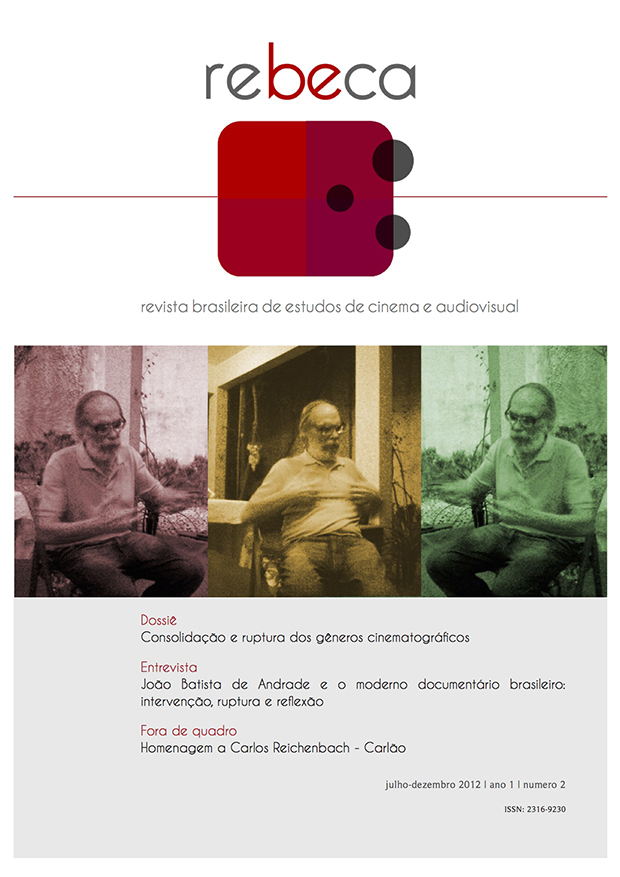Mamãe eu quero: Carmen Miranda’s Maternal Abundance
DOI:
https://doi.org/10.22475/rebeca.v1n2.283Abstract
Na resenha do segundo filme estrelado por Carmen Miranda em Hollywood, Uma noite no Rio (That Night in Rio, 1941), a revista Variety assinalou de que maneira sua presença como coadjuvante claramente roubava a cena dos supostos protagonistas: “[Don] Ameche está correto em seu duplo papel, e Miss [Alice] Faye está muito atraente, mas é a tempestuosa Miranda que dispara na frente, desde a primeira sequência”. Esse tipo de comentário parece indicar certa surpresa com o fato de que Carmen, estando em terceiro lugar nos créditos, aparecesse de forma tão central já no início do filme. Efetivamente, todos os três primeiros filmes que Carmen fez para a 20th Century Fox em Hollywood abrem com um número musical seu, antes que qualquer fala fosse pronunciada. Este formato em comum apresenta Carmen para o público sem um nome de personagem, sem um foco narrativo ou (como discutirei adiante) forte marcação de espaço e tempo. De outro modo, essas aberturas enfatizam Carmen como força central e dominante - seu corpo com elaborados acessórios e movimentos, seu desempenho vocal único e, de muitas maneiras, seu mundo.Downloads
Downloads
Published
Issue
Section
License
1. Authors retain the copyright and grant the journal the right of first publication, with the work simultaneously licensed under theCreative Commons Attribution License, which allows the sharing of work with acknowledgment of authorship and initial publication in this journal.
2. Authors are authorized to take additional contracts separately, for non-exclusive distribution of the version of the work published in this journal (e.g. publish in institutional repository or as a book chapter), with acknowledgment of authorship and initial publication in this journal.
This work is licensed under a Creative Commons Attribution-NonCommercial-ShareAlike 3.0 Unported License.
CC BY-NC-SA
This license allows others to remix, adapt, and create from your work for non-commercial purposes, provided they credit you and license new creations under identical terms.
You are free to:
● Share — copy and redistribute the material in any medium or format.
● Adapt — remix, transform, and build upon the material.
The licensor cannot revoke these freedoms as long as you follow the license terms:
● You must give appropriate credit, provide a link to the license, andindicate if changes were made. You may do so in any reasonable manner, but not in any way that suggests the licensor endorses you or your use.
● You may not use the material for commercial purposes.











